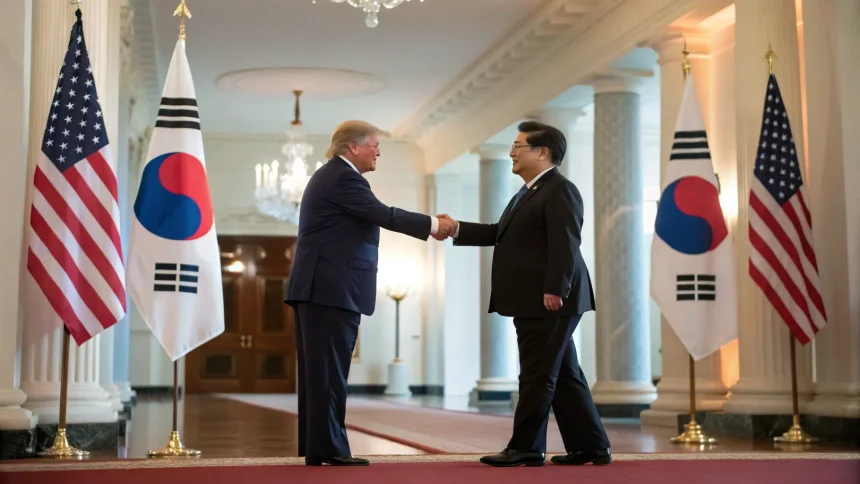The presidents of the United States and South Korea are set to meet in Washington, D.C. on Monday to discuss significant updates to their long-standing alliance and finalize details of a recent trade agreement.
The high-level summit comes at a time when both nations are looking to strengthen their partnership amid changing global dynamics. The meeting will focus on two main areas: modernizing the alliance that has stood for over seven decades and implementing the trade deal that was reached just last month.
Updating a Historic Partnership
The U.S.-South Korean alliance dates back to 1953, following the Korean War. For 71 years, this partnership has been a cornerstone of security in the Asia-Pacific region and has evolved through numerous global challenges.
Monday’s discussions are expected to address how this alliance can adapt to current security threats and technological advancements. Both leaders will likely discuss military cooperation, defense capabilities, and strategic coordination in response to regional challenges.
The modernization talks come amid growing concerns about North Korea’s nuclear program and China’s increasing influence in the region. Updating the alliance framework could include new approaches to:
- Joint military exercises and training
- Cybersecurity cooperation
- Space technology collaboration
- Intelligence sharing protocols
Trade Deal Implementation
A significant portion of the summit will focus on the trade agreement reached between the two countries last month. The presidents are expected to discuss specific implementation timelines and resolve any outstanding issues.
The trade deal, which has not yet been fully detailed to the public, is believed to address key economic sectors including semiconductor manufacturing, electric vehicle production, and clean energy technology.
Economic analysts suggest this agreement could strengthen supply chains between the two countries at a time when both are working to reduce dependence on Chinese manufacturing. The deal may also include provisions for technology transfer and joint research initiatives.
Regional Implications
The summit takes place against a backdrop of shifting power dynamics in East Asia. The strengthened U.S.-South Korea relationship sends a clear message to neighboring countries about American commitment to the region.
Experts note that the timing of this meeting is strategic, coming after recent tensions in the Taiwan Strait and continued missile testing by North Korea. The visible solidarity between Washington and Seoul aims to demonstrate the durability of their partnership.
Both countries have emphasized that their cooperation extends beyond military matters to include economic security, climate change initiatives, and pandemic preparedness.
The summit is expected to produce joint statements reaffirming mutual defense commitments and outlining new areas of cooperation. Officials from both countries have indicated that concrete action plans will follow the high-level discussions.
As the two leaders meet in Washington, they carry the weight of seven decades of partnership and the challenge of adapting this alliance to meet the demands of a rapidly changing global landscape. The outcomes of Monday’s summit will likely shape U.S.-South Korean relations for years to come.







